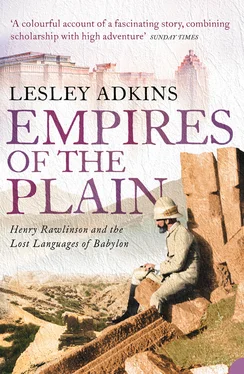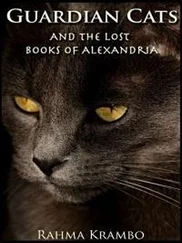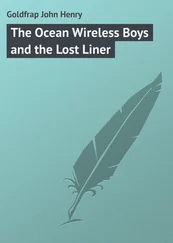Having put cuneiform inscriptions out of his mind for now, Rawlinson’s first concern was the raising of troops from local Kurdish tribes. Wild in their ways of living and independent in their attitude, the Kurds only felt allegiance to their own tribe and resented being ruled by Persians. In his journal at this time, Rawlinson set out his rules for his own conduct, demonstrating his grasp of the fragility of the situation: ‘Create business for yourself. Lose no opportunity of making yourself useful, whatever may be the affair which may happen to present the chance. Grasp at everything, and never yield an inch. Above all, never stand upon trifles. Be careful of outward observances. Maintain a good establishment; keep good horses and showy ones; dress well; have good and handsome arms; in your conversation and intercourse with the natives, be sure to observe the customary etiquette.’ 8 In this way, by unceasing work and tactful persuasion, Rawlinson succeeded in recruiting and training three regiments.
In mid-August Bahram Mirza ordered Rawlinson to assist Suleiman Khan, the governor of Kurdistan to the north of Kermanshah. Suleiman was, Rawlinson thought, ‘a regular tyrant, but made great friends with him’. 9 Rawlinson took control from the governor of raising and training a regiment of troops from among the Guran Kurds, a most unruly mountain tribe. About six weeks later he was recalled to Kermanshah by Bahram Mirza, and that same day the Guran Kurds mutinied, murdered Suleiman Khan and headed off westwards towards the frontier, with the intention of crossing into Turkish territory where they would be safe from Persian reprisals. News of the revolt compelled Bahram Mirza to send Rawlinson straight back to the mountains to try to quell the rebellion. He managed to rescue Suleiman Khan’s son Muhammed Wali Khan, proclaimed him governor and began rounding up the less disaffected troops. Hurrying towards the border, Rawlinson persuaded those who had not reached it to accept Muhammed as their new leader and reaffirm their oath of allegiance to the Shah. Inevitably, many mutineers escaped into Turkish territory, but in the space of a few days Rawlinson’s military skills and diplomacy had put down the rebellion and restored peace.
After ten days of ‘continual excitement and very hard work’ 10 Rawlinson was struck down by ‘bed fever’, probably malaria from which he had last suffered over a year previously at Tabriz, and was forced to complete the journey back to Kermanshah in a litter. After trying all types of remedy, he was getting no better, so ‘made them cut the fever by bleeding me till I fainted – rather severe treatment’. 11 Remaining extremely weak and unable to face the long trek to Tehran for treatment, he chose to be transported along the shorter and easier route westwards out of Persia to Baghdad, in what was then Turkish territory, where he could be cared for by a European doctor. He reached Baghdad on 29 November 1835 and placed himself in the hands of Dr John Ross, the thirty-year-old surgeon to the British Residency. Under Ross’s treatment Rawlinson recovered rapidly.
A whole month was spent on sick leave recuperating at Baghdad, but ever anxious not to be idle, Rawlinson set about learning Arabic and ‘made the acquaintance of Colonel Taylor and was initiated into Arabic lore’. 12 Colonel John Taylor, the East India Company Resident at Baghdad, was an antiquarian and ‘so good an Arabic scholar, that when the Cadi or the Mufti met with a difficult passage in some old manuscript and were not sure of the correct reading, they sent or went to him. He never left his house and was always to be found in his study poring over Arabic books. Unfortunately he never wrote anything.’ 13
At the end of December, Rawlinson was sufficiently recovered ‘in health and spirits’ 14 to ride from Baghdad to the Persian town of Zohab at the foot of the Zagros mountains, at that time ‘a mass of ruins, with scarcely 200 inhabited houses’ 15 because of constant wars between Persia and Turkey. Here he met up with Bahram Mirza early in the new year and stayed for six weeks, training the Guran regiment, ‘until he had brought his new corps into a state of perfection almost unknown in these regions’. 16 All the while, Rawlinson wrote down his observations of the district and took delight in the scenery, such as at the source of the Holwan River, which ‘rises in the gorge of Rijáb, on the western face of Zagros, about 20 miles E. of the town of Zoháb. It bursts in a full stream from its source, and is swollen by many copious springs as it pursues its way for 8 miles down this romantic glen. The defile of Rijáb is one of the most beautiful spots that I have seen in the East; it is in general very narrow, scarcely 60 yards in width, closed in on either side by a line of tremendous precipices, and filled from one end to the other with gardens and orchards, through which the stream tears its foaming way with the most impetuous force until it emerges into the plain below.’ 17
In a mountain gorge north of Zohab, Rawlinson copied a small sculptured relief with a cuneiform inscription, noting that it was ‘divided into three compartments of four lines each, and written perpendicularly in the complicated Babylonian character, which I had never before seen, except upon bricks and cylinders’. 18 He had in fact already seen Babylonian at Bisitun, but did not yet realize it was the same script used on baked clay objects such as bricks, because without careful study they appeared so different. Just south of Zohab, at a place called Sarpol-i Zohab, as well as ‘Gates of Asia’, he recorded a sculptured relief on another rock face: ‘It represents a figure in a short tunic and round cap, with a shield upon his left arm, and a club resting upon the ground in his right, who tramples with his left foot upon a prostrate enemy; a prisoner with his hands bound behind him, equal in stature to the victor, stands in front of him, and in the background are four naked figures kneeling in a suppliant posture, and of a less size, to represent the followers of the captive monarch; the platform upon which this group is disposed is supported on the heads and hands of a row of pigmy figures, in the same manner as we see at the royal tombs of Persepolis. The face of the tablet has been much injured by the oozing of water from the rock, but the execution is good, and evidently of the same age as the sculptures of Bísutún and Persepolis.’ 19
This remarkable monument that Rawlinson had discovered was just over 100 miles due west of Bisitun, but he misinterpreted the sculpture, because the prisoner with the same stature as the victor did not have bound hands and was in fact the warrior goddess Ishtar, the most important female deity in Mesopotamia. She is shown offering King Anubanini the royal diadem, while he stands on a prisoner, with other captives shown around him, all of a smaller size. The relief dates to about 2000 BC, one thousand five hundred years earlier than that at Bisitun, but it must have been copied by Darius the Great, as he is shown at Bisitun in virtually identical pose, with the goddess Ishtar transformed into Ahuramazda.
Bahram Mirza next ordered Rawlinson to take the regiment on an expedition southwards through the Zagros mountains into Luristan and Khuzistan (the area in south-west Persia that was once ancient Elam) to suppress increasing trouble with the powerful and fiercely independent Bakhtiari mountain tribe. Rawlinson knew that the area ‘had seldom, if ever, before been trodden by the foot of an European’, 20 and recognizing this as an opportunity for pioneering exploration, he kept copious notes of everything of geographical and historical interest on the journey.
The expedition set off on 14 February 1836, with Rawlinson leading 3,000 Guran troops and their artillery southwards through the mountains. They marched between 20 and 40 miles a day, and Rawlinson met and talked with the chiefs of various local tribes through whose territory they passed. He often left his men to march to their overnight camp while he went ahead on horseback to explore the antiquities of the region, which were mostly Sasanian, ranging from ruined cities, temples, bridges and fortifications to small rock-cut inscriptions. Four days on he explained: ‘I halted to-day at Chárdawer, to enable the troops to come up and rest, after their very fatiguing march. I was in some apprehension at first; for there was blood between the Gúráns and the followers of Jemshíd Beg, the latter having joined the Kalhur tribe in their last foray on the Gúrán lands, and having lost several men in the skirmish which ensued. “Had they slain, however, a hundred of my men,” said Jemshíd Beg, “they are your sacrifice; the Gúrán having come here under your shadow, they are all my guests;” and he insisted, accordingly, in furnishing the regiment with supplies, as a part of my own entertainment. Neither could I prevail on him to accept of any remuneration.’ 21
Читать дальше












